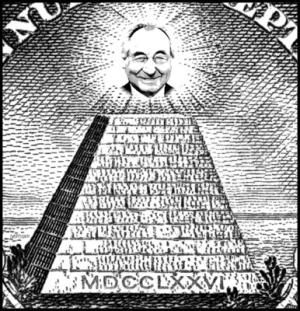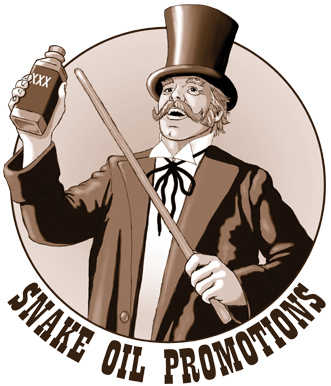What can accurately be pointed out regarding the structure of the financial planning/advice industry is that it closely resembles a pseudo pyramid scheme, not unlike the business model developed by Richard DeVos and Jay Van Andel in the late 1950’s when they established what would eventually become Amway, in which network marketing is the primary means of generating business. Network marketing basically entails selling products to those you know, or to those whom the financial advisor (FA) has some manner of relationship, to include blood relatives, friends, associates and most importantly the referrals obtained from these relationships. In other words, for network marketing to work, the FA must ‘pimp’ their family and friends and foist their products and services on the people they are closest to, and then subsequently twist their family member’s and friend’s arms for referrals.
Of course, it differs from a true pyramid scheme; while a genuine pyramid scam generates revenues from new investors into the structure to subsequently line previous entrants’ pockets, the nature of commissions and fees from the financial services industry are indeed generated by consumers who are more or less satisfied with the product they purchase, which is advice. This advice can be good, bad or mediocre, and after a period of time, perhaps nonexistent. Amway has been dogged over many decades by accusations of being a pyramid scheme, but the technical structure they have put in place does not cross that line, however close to the line that legal call may lay.
From 1959 until the late 1990’s, Amway used network marketing to advance Amway’s reach into virtually every corner of America. Once nearly total saturation of their network marketing plan was obtained in North America by around 2000, Amway focused on new markets internationally, as nearly every family in North America had an Amway connection, and no new network marketing was possible going forward in a nearly total saturation of the North American market place.
While the comparison between the business model of Amway and that of most if not all financial services companies is inexact, the basics of both models remain the same: to survive in either environment (Amway or the financial services industry), the sales professional must spread the word of the ‘value’ of their services throughout their own social network rather than more traditional approaches used by businesses in the past such as media advertising. The larger the circle of friends, family and associates (or what is referred to within the industry as a ‘warm market’), the more likely that individual will succeed in gathering assets. In time, a similar saturation as happened with Amway will ultimately occur within the U.S. financial services market, with nearly every American family having a social connection to one financial advisor or another, and expansion using network marketing will no longer be a viable business model within the financial services industry.
As to the assets that FA’s seek from their family, friends and associates, these assets will then be transferred by the FA to his/her licensing sponsor (the brokerage firm) and held in stewardship on behalf of the client by the firm and the FA as ‘assets under management.’ Subsequently, under the FA’s ‘professional management,’ this arrangement supposedly justifies the accompanying fees, commissions, trails, transaction costs, etc. Parts of those fees, commissions, etc. are kicked back to the individual financial advisor. Give or take, the FA will receive 50% of the fees, commissions, etc., and often much less.
One of the less obvious and yet disturbing facts mentioned previously about working with an FA to manage one’s assets is this: in any downturn in the market, equities, commodities and certain income funds lose value and decrease the amount of principal within a client’s portfolio. This unfortunate event, however, never goes into negative territory as far as the brokerage house’s income statement or the FA’s wallet is concerned. Commissions paid to the FA by the client may decline in a downturn, but they never, ever go into the red as do the portfolio returns of the client. In good times and bad, the brokerage house and the FA gets paid regardless of the performance (or lack thereof) that their ‘professional management’ yields within their client’s portfolios; much like the brokerage partners of ‘Duke and Duke’ in the 1983 film ‘Trading Places,’ starring Eddie Murphy and Dan Ackroyd. When Randolph and Mortimer Duke (played by Ralph Bellamy and Don Ameche respectively) were explaining how the commodities brokerage business worked to neophyte Billy Ray Valentine (portrayed by Eddie Murphy in this film), Billy Ray replied ‘sounds like you guys are a couple of bookies to me.”
This observance by Billy Ray is not entirely inaccurate.
Boxing Day 2025
-
Boxing Day was a lot of fun, with family and friends in Dallas, a delicious
rib roast bought at what passes for a bargain these days, Yorkshire
puddin...
8 hours ago










